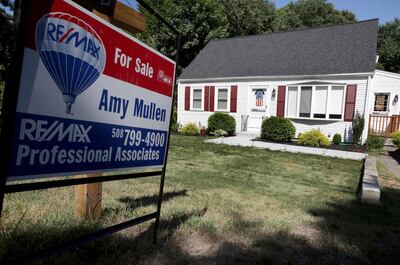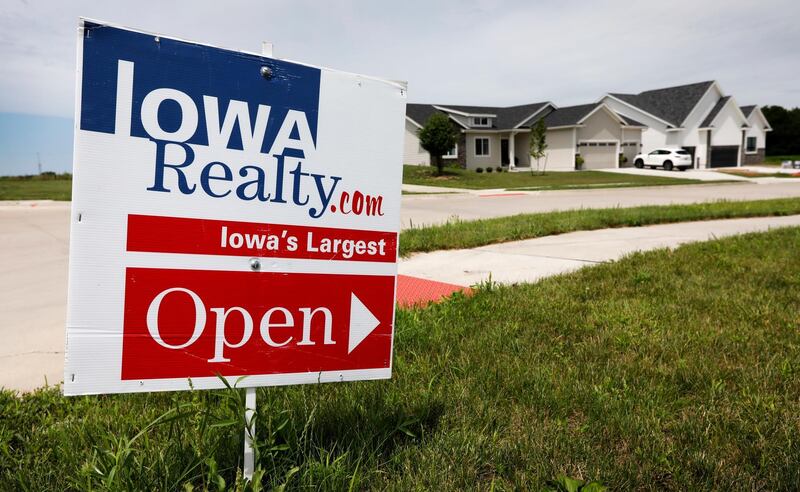A decade on big US banks are still running down and selling off crisis-era mortgages, a process executives point to as weighing on loan growth.
Eager to see a turning point in loan books, analysts count these portfolios as one factor, along with home equity loan runoff and new mortgage demand, to watch for the right time to decipher the true loan growth picture as US second-quarter bank earnings started earlier this month.
Wells Fargo and Bank of America executives have flagged portfolios from prior to the 2008-2009 crisis era where banks are no longer originating similar new products when they are asked to predict a turning point in consumer loans. "These are portfolios of a bygone era that were very, very painful for the banks," says Gerard Cassidy, bank analyst with RBC Capital Markets. "They are not plain vanilla portfolios, which means they are more costly to manage. It may just not be worth the headache."
Analysts have said higher loan growth is critical to driving bank's stock prices, but they anticipate only a modest acceleration year over year, driven primarily by commercial and industrial loans, not residential.
"Remember that there's a portion of that book that, again, is pre-crisis," Chief Executive Tim Sloan said about Wells Fargo's mortgage book at a May conference. He added the bank continues to examine the older portfolio's risk-return tradeoff and sells assets when the opportunity arises, factors "that could have some impact" on growth.
Old mortgages
Wells Fargo owns around $23 billion of "Pick-A-Pay" loans it picked up by buying the floundering Wachovia bank at the height of the mortgage crisis, versus $115bn 10 years ago. Those loans allowed borrowers to initially choose their monthly mortgage payment, even if it was not enough to reduce the debt.
Bank of America at the end of 2017 had nearly $11bn in credit-impaired mortgages left from buying Countrywide Financial, less than one-third of what it held at the end of 2009.
"We're still running off some portfolios, believe it or not, 10 years after the crisis," Bank of America chief executive Brian Moynihan said in April when asked about overall loan growth not picking up after the US tax cuts passed by Congress late last year, noting 5 per cent growth in core lending outpaced US economic growth.
JPMorgan Chase still owns roughly $30.5bn-worth of the $89bn in bad loans took on from Washington Mutual in 2008.
The pre-crisis loans do weigh somewhat, but the portfolios' small size mitigates the overall earnings impact, says Keefe, Bruyette & Woods analyst Brian Kleinhanzl. "It's a runoff portfolio so there is some drag to growth," he adds.
Most of these mortgages may not be in foreclosure or delinquency. Bank of America said 88 per cent of unpaid principal on Countrywide loans was current at the end of 2017. Runoff or sales can also take a small bite from revenue if the loans are higher yielding than the broader loan portfolio.
___________
Read more:
How buying a home in the UAE can halve your rent
How to manage an overseas property investment
Dubai property transactions slide in the first half of 2018
Should UAE residents focus on retirement or paying down their mortgage?
____________
Borrowers struggling
Some individual borrowers are still struggling to turn the page a decade later.
The Mortgage Bankers Association said that of the 39 million outstanding US mortgages it tracks, about 1.2 million are seriously delinquent loans issued in 2007 or earlier. The loans have not been paid in at least three months, and many are in foreclosure.
Charlena and Keith Kendrick said they recently filed for Chapter 13 bankruptcy to avoid foreclosure on their suburban Indianapolis, Indiana home.
They started struggling to pay their Wells Fargo Pick-a-Pay mortgage in 2012, Ms Kendrick said. By this May, they owed around $100,000 on their mortgage and were behind $11,000 on monthly payments when they say the bank declined their fourth modification request.
"I feel like this bad paper to them," she says. "I feel like they really just want to get rid of it."
Wells Fargo spokesman Tom Goyda said that the bank works "hard to help customers avoid foreclosure." Since 2009, Wells Fargo has forgiven $9bn of mortgage principal, including $6bn of Pick-a-Pay loans.

Hanging onto equity
While some are struggling, other homeowners are sitting on a record amount of equity, but this time they are stubbornly reluctant to borrow against it.
Strong home price appreciation has handed Americans more than $5.8 trillion of equity they could be tapping and are not, more than double the level in 2011, according to data provider Black Knight. At least part of that reluctance stems from rising rates, which means debt carrying adjustable rates will keep growing more expensive.
Last decade’s mortgage crisis has likely made consumers hesitant, too. Home prices fell 35 per cent after the bubble burst, leaving many borrowers owing more than their house was worth. People who tapped their equity to pay off their credit cards ended up struggling to meet their obligations, says Dan Alpert, managing partner at Westwood Capital, a New York-based investment bank focusing on real estate.
“There’s a long-memory issue," Mr Alpert says. “People got caught with home equity lines last time."
The banking industry is now encouraging homeowners to take a little more risk. Lenders jacked up their spending on direct-mail for home equity products by 30 per cent in the first quarter compared to a year earlier, according to market research firm Mintel.
The offers are landing in the mailboxes of potential customers like Andy Dogan, 42, who considered taking out a home equity line to increase his stake in the architecture firm where he’s a partner and make home improvements. He ultimately passed when the bank offered him a line for about $20,000 less than the mailer said he could be eligible for.
"We were underwhelmed as to what we were able to do, especially given that their solicitation threw a number out there," Mr Dogan says. He said he’d probably wait a few years for the equity in his Elgin, Illinois, home to increase further before considering a line of credit again.
Growing customer base
Some banks have had success growing their client base. Citizens Financial Group has boosted its volume by a double digit percentage this year thanks in part to a data and analytics programme that helps it find customers based on factors like credit scores, home values and incomes, says Brendan Coughlin, president of consumer deposits and lending.
"It’s time to see home equity lending come back," Mr Coughlin says. "Each year we’re investing more."
Other bank executives say the same, and it’s easy to see why: total homeowner equity has surged in recent years, up 150 per cent from 2009’s $6tn, according to Federal Reserve data. That’s partly because US home prices have on average risen around 7 per cent annually since 2012, according to S&P CoreLogic Case Shiller data, and partly because Americans have been paying down their home loans in aggregate after gorging on mortgage debt last decade.
It makes sense for at least some consumers to tap into their growing equity now, says Citizen Financial’s Mr Coughlin. Borrowing against a house is significantly cheaper in terms of annual interest rates, compared with alternatives like credit cards or unsecured personal loans. Homeowners are also staying put longer and renovating, which may spur them to borrow against the value of their home.
The pace of new home equity lending has been accelerating in recent years - lenders are making about 98 per cent more home equity loans and related lines of credit than they did during the depths of the recession in 2009. That sounds impressive, until you consider that tappable equity has surged by more than 120 per cent.
Even with the new lending, the total amount of home equity lines outstanding has fallen for years as borrowers continue to pay down last decade’s debt. There are $398bn of the lines outstanding now, down from a peak of $674bn in 2009, according to the Federal Deposit Insurance Corp. Executives at banks, including Wells Fargo, say it may take another year for new lending to outstrip the older debt paydowns.
Homeownership rate
In addition to rising rates and borrowers’ fears, a tax law shift may be weighing on demand, too: homeowners now can deduct interest on their home equity lines of credit only if they use the proceeds to renovate or otherwise invest in their homes. The declining homeownership rate - it’s fallen to about 64 per cent of US households from a pre-crisis high of 69 per cent - may also explain why borrowers are not tapping as much of their equity. People who tended to be aggressive in borrowing against their homes before are probably renting now, says Christopher Mayer, a professor of real estate at Columbia Business School.
"The people who are no longer homeowners are the people who were most likely to take out a home equity line of credit," says Mr Mayer, who is also chief executive of a company that helps older Americans tap their home equity using reverse mortgages.
Homeowners now understand that the equity in their house may vanish quickly, and they should tap it carefully, says Catherine Kirchner, who manages home mortgage sales and growth at US Bancorp, the fourth largest bank mortgage lender last year.
"They definitely think twice," Ms Kirchner says. "Whereas pre-2008, people were opening a home equity line of credit to go on vacation or buy a car."






